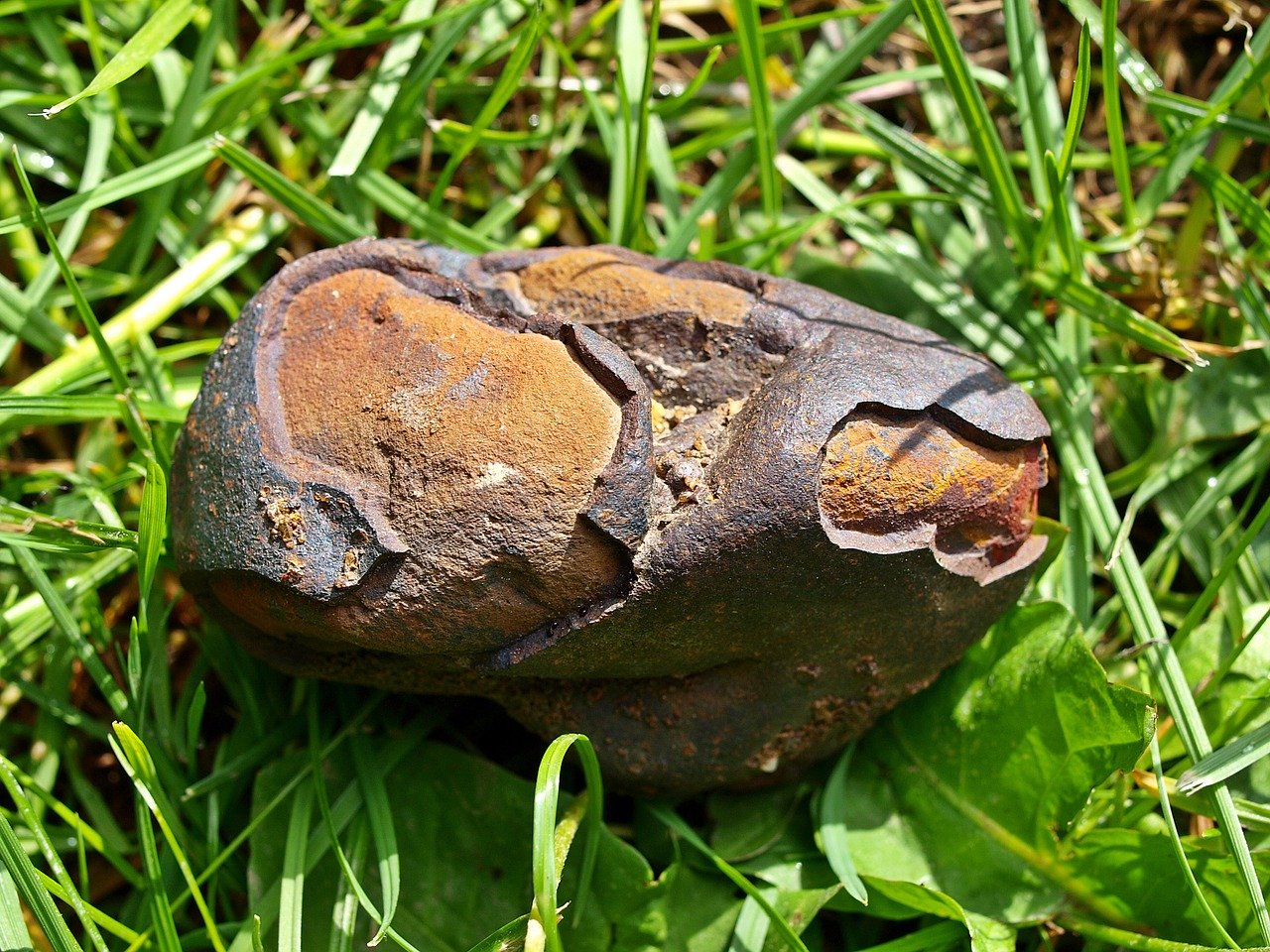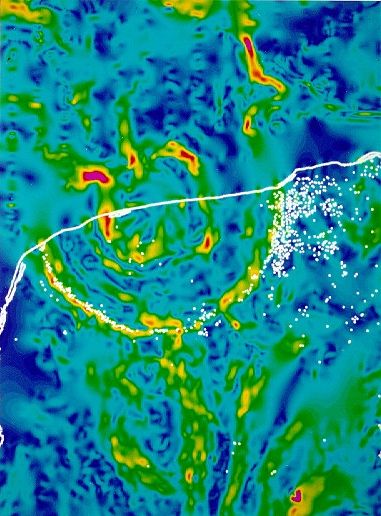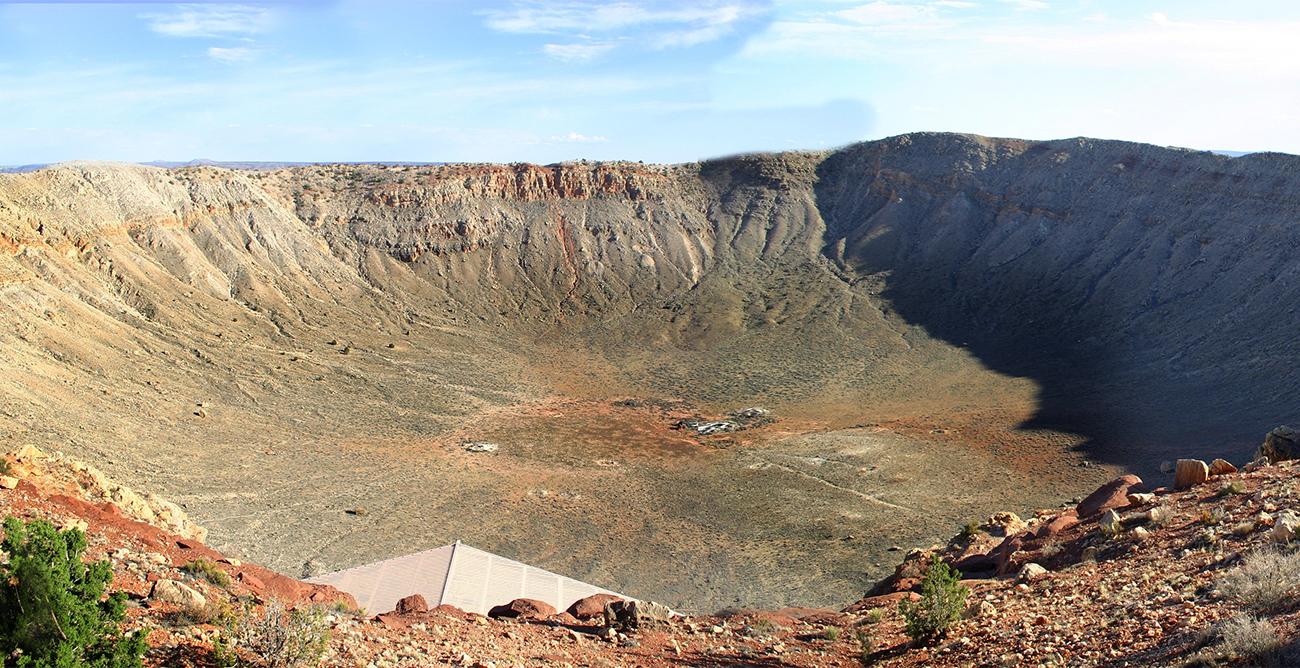How to identify a Meteorite
As there are many types of meteorite, and the differences may be subtle between some samples, it can make it challenging to distinguish between what type of meteorite you have found instantly. However, we can do some field tests which can go some way to verifying that the sample you have found is indeed a meteorite. So, what should we look for?
1) They would have an entry pattern. This would come in the shape of something called a fusion crust. This is formed as the rock passes through our atmosphere, making the sample smooth almost entirely, or to one side. Entry through our atmosphere can change the shape of rock entirely, into some really interesting shapes. Something which can happen to a sample as it makes its way through the atmosphere is that it can develop something called Regmaglypts. These are fascinating structures, which are carved out of larger, or denser samples of rock, formed as gasses are trapped in the imperfections of the sample as it enters, making smooth little dimples.
2) It could be magnetic. Although not always the case, as 90% of meteorites are mostly Iron / Nickel, they tend to be very magnetic. Using a rare Earth magnet, such as Neodymium, would be a way of verifying this, and a metal detector to find them buried, or covered. Some samples you find in this way may be Earth bound, so to test that we could move onto the next step.
3) The testing tiles. If you take a tile, such as a bathroom tile, and on the reverse, scrape your sample across it. If the sample leaves a black\grey or brown\red line, this would likely be Earth rock, Meteorites do not leave a line.
4) Grinding the stone. This isn’t really the most popular way of testing the sample, as it damages it, however, it is a great way to see inside, and help verify the sample. Put your rock into a vice, and taking a large strong file, scrape away the corner of the sample. Once you can see below the outside coating of the sample, if you can see little speckles of metal, this could be meteorite.

Meteorites are very difficult to find in the UK, or areas where we have extreme weather systems, and strong vegetation growth. To increase your chances of finding a meteorite, you would be best of heading somewhere such as a desert, or even Antarctica. As these places are very stable environments, and dry, the meteorites are preserved for longer, and also much easier to find as they stand out against the background terrain. If you see something large entering the atmosphere, you can also work out where it has landed if you have visible data from a number of angles. This can be achieved by CCTV, Dash Cams, and Weather satellites, which can help us estimate an area we could go search for meteorites.
Meteorite Impacts
When a meteorite lands on Earth, depending on its size it can do significant damage to anything below it. Although after it enters through the Earth’s atmosphere, the meteorite would slow down considerable if it was less than the weight of 4 Elephants, from up to 160,000mph to terminal velocity, which is around 400-600mph, still very fast, but with less devastating effects. The heavier the rock, the more of its original speed it would retain.
When something hits the ground at these speeds, it can displace material underneath, as it looks to transfer its energy. This will result in the ground underneath been thrown around the impact zone equally in all directions.
There are some incredible craters around our planet, the largest of such which is called the Vredefort Crater in South Africa. Around 2 billion years ago, an asteroid around 9 miles wide, entered through Earth’s atmosphere and struck the ground as such speeds that it created this 300km wide crater.
One of the most famous around the planet is that of the Barringer Crater, near Flagstaff in Arizona. The banner photo at the top shows this crater as it is today - appoximately 50,000 years after the impact. This crater is about 1km wide, 170m deep and the rim raises a further 45m above the surrounding terrain. As the energy displaced by this impact has pushed the Earth away from underneath, thus creating a raised rim - which is common for craters such as this. Researchers believe that the meteorite that caused this was approximately 50m in diameter, and hit the ground at around 12.8km/s.
Around 66 million years ago, an asteroid or comet is believed to have impacted our planet, just off the coast of Eastern Mexico, in what is now the Gulf of Mexico. This region is home to a giant crater called the Chicxulub Crater, and is believed to be the impact site of the asteroid or comet that was responsible for the extinction of the dinosaurs.

The gravity anomaly shows the Chicxulub impact area. The white line denotes the Mexican coastline


